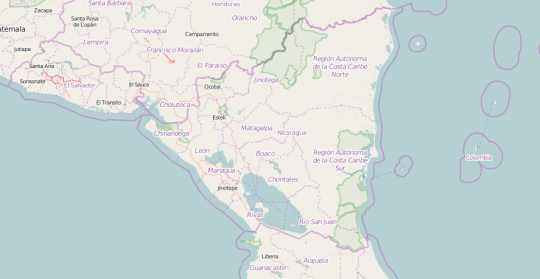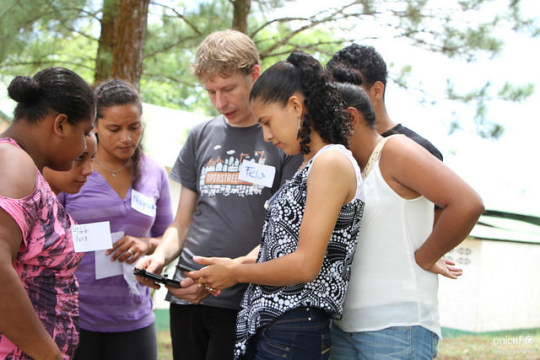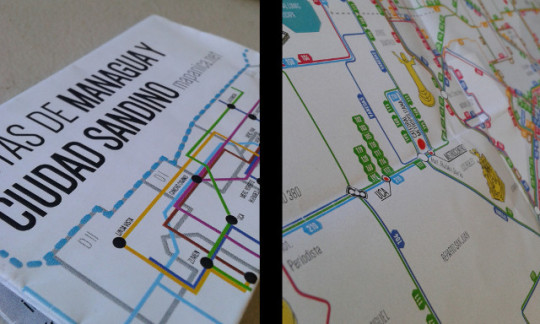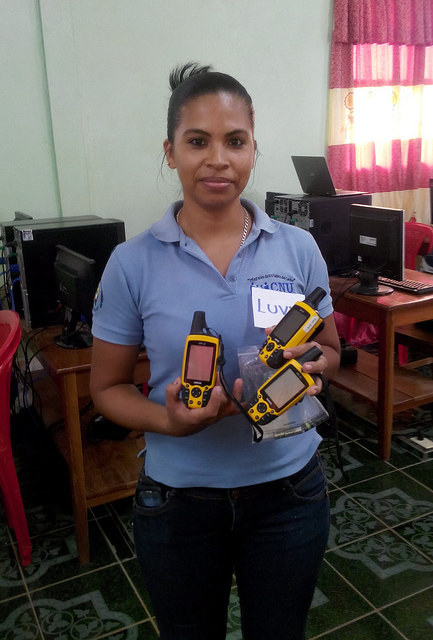Today we continue our interview series looking at OpenStreetMap communities around the world. It’s our pleasure to interview Felix Delattre representing OpenStreetMap Nicaragua.

1. Who are you and what do you do? What got you into OpenStreetMap?
I’m a Digital Media consultant and Internet strategist based in Nicaragua and Germany. Currently, I’m studying a master’s program on Geographical Information Systems in Sweden.
My background is Free Software, its communities and Open Data initiatives. In 2012 I started with presentations about collaborative maps in Nicaragua and I become actively involved in OSM community building in the region. I organized over thirty mapping events in Nicaragua over the last years.
Collaborative maps do a magnificent job of showing the cycle of collaborative work, the principle of Free Software and Open Data. People get inspired, when they understand what it means to build upon existing work or data, then to put their little grain of sand to it, and get a little improvement for everybody.
With Open-Geo-Technologies I found a great way for myself and everybody to empower ourselves by using those principles for the development of our local environment.

2. What would you say is the current state of OSM and the OSM community in the Nicaragua?
We are a very active and motivated community. And we are always well focused on using the technology to achieve tangible results that improve our lives. Right now, OSM in Nicaragua is the best source for vectorial geographic information of the country.
150 volunteers from the community surveyed over the last two years the capital’s public transport network and we created a transit map online for the first time in Nicaragua. Today we just finished a great design of a paper map based on this data, which we are hoping to be able to print and distribute to the people.
Last year, with UNICEF support, the Nicaraguan OSM community mapped the city of Bluefields in the Southern Caribbean Coast Autonomous Region of Nicaragua. This initiative strengthened the capacities of local actors with respect to their knowledge of social mapping. It also involved the participation of children and adolescents, as well as students and teachers from the city’s universities.
3. What are the unique challenges and pleasures of OpenStreetMap in Nicaragua?
Any place in the world has its particularities. In Central America the address system is not mainly based on street names and house numbers, instead reference points are the official system how people describe addresses. These look like this:
“From where the Cinema Cabrera was before, 2 blocks south and 20 meters east.”
“From the “Little Tree” 250 meters west.”
A system, like OSM, allowed us to adapt it to this particularities and we could introduce a tag for this: reference points. And in general we are with OSM in Nicaragua at an emotional moment. A lot of work we are doing is pioneer work in the country. And introducing geographic thinking to new people is always a huge and positive step. And we are the same people doing everything with others. This participatory culture of sharing and innovation is a incredible resources of progress.
4. What steps could the global OpenStreetMap community take to help support OSM in Nicaragua?
We are just about to finish (on 31st of January) our crowd-funding campaign to print the first proper transit map in Managua. We are only a little bit short from reaching our goal. Please help us to make our dream happen. Any donation will be thankfully rewarded with a printed paper map or cool T-shirt.

Help us to map in Nicaragua! There is still a lot to do, and a lot of the data can be generated by satellite images. Especially you can help to map the Atlantic coast, the remote part of Nicaragua.
5. In 2014 OSM celebrated its 10th birthday, where do you think the project will be in 10 years time, both globally and in Nicaragua specifically?
Personally, I think, OSM is going to be accepted to a much wider extend in classical appliances. As the data quality and coverage improves, state organizations, companies, students, scientists and citizen initiatives will rely more and more on OSM data. This, once again, will improve the data and the cycle to more acceptance is closed.

Thanks Felix. I encourage all readers to support the mapanica crowd funding project, and have just made a donation myself. Good luck to you and all the other Nicaraguan mappers. Anyone interested in learning more should follow @OSM_ni on twitter.
You can see all the Open Geo interviews here. If you are or know of someone we should interview, please get in touch, we’re always looking to promote people doing interesting things with open geo data.